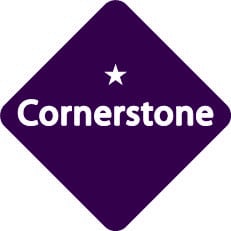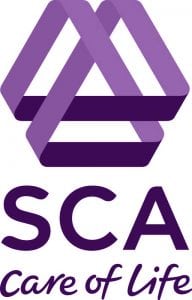Popular DiSC Profiles
DiSC Classic 2.0
Everything DiSC Workplace
Everything DiSC Work of Leaders
Everything DiSC 363 for Leaders
Everything DiSC Management
Everything DiSC Sales
View DiSC profile report samples
The DiSC profile questionnaire
The DiSC assessment is easy to take. With the newer Everything DiSC profiles, people are responding to a phrase instead of a single word.
sample DiSC questions
How is DiSC used?
Our customers include Fortune 500 companies, small businesses, non-profits, government agencies, educational institutions, churches, leadership coaches, HR consultants, health care centers, financial institutions, building trades, and individuals. They find DiSC an easy-to-understand and effective tool to:
Build productive teams
Develop effective managers, supervisors, leaders
Train a powerful sales force
Improve customer service
Help with change and conflict management
Assist in hiring, recruiting, placement, promotion, outsourcing
Enhance the counseling or coaching experience
Cornerstone principals
All DiSC styles and priorities are equally valuable. We are all a blend of all four styles.
Your work, management and leaders styles are also influenced by other factors such as life experiences, education, and maturity.
Gaining a better understanding of yourself is the first step to becoming more effective when working with others.
Learning about the DiSC styles of other people you work or live with can help you understand their priorities and how they differ from your own.
You can improve the quality of your workplace, place of worship, home or other locations by using DiSC to build more effective relationships.
A little history
The initial DISC model comes from Dr. William Marston, a physiological psychologist, in a book entitled Emotions of Normal People, published in 1928. He did not create an instrument from his theory, but others did. That’s why you might discover other DISC tests in the marketplace. So be sure to look for the lowercase i in DiSC® to be sure you’re looking at the assessment tool researched, validated, and published by Wiley / Inscape Publishing.
DiSC® Profiles
Each DiSC® profile is topic-specific, with in-depth information, including tips, strategies, and action plans to help you become more effective.
All E DiSC® profiles include access to unlimited free follow-up reports.
Important distinctions with our DiSC® profiles:
Your DiSC® style is represented as a dot on a circle rather than on a graph
- Each profile focuses on a specific context helping you to improve in that particular area (i.e. management, leadership, sales, workplace relationships)
- We use ‘adaptive testing’ which is an interactive process that tailors questions based on your individual item responses. This results in an even more precise profile report and an even more relevant and useful outcome!
- Post report you receive access to a unique website that provides bespoke information on your report and allows you to generate multiple comparative reports of how you may work more effectively with others in team who have also completed one
DiSC® Workplace Profile
The DiSC® Workplace Profile is an ideal profile for team building and mediation. It can be used by anyone in an organisation, irrespective of their title or role, to improve the quality of workplace relationships
The Everything DiSC® Workplace Profile is a 20-page personalised profile that helps you to: &nbs…
DiSC® 363 for Leaders Profile
DiSC® 363™ for Leaders isn’t just any 360. It combines the best of 360s with the simplicity and power of DiSC, and gives you as a leader your three personalised strategies for improving your leadership effectiveness.
So what’s different about DiSC® 363™ for Leaders
For many leaders, 360’s can be a frustrating experience. Open – ended comments can be unfocused and unhelpful and can even derail the learning process. With the exclusive selectable comment smart feature called ‘CommentSmart’, raters can give focused, balanced, constructive feedback that the leader can actually apply and use.
DiSC® 363 for Leaders isn’t a collection of dry spreadsheets and charts without any explanation or story. Clear visuals and a conversational narrative style interpret and explain the data, making the report easy to understand and use.
With a lot of 360s, the leader’s response can be, “Now what?” DiSC® 363 for Leaders answers that question by giving leaders their next steps with three development areas they can focus on now to improve the way they lead.
This research-validated online assessment with a 22+ page 360° profile helps leaders understand how others see them, using intuitive, easy-to-read visuals, rich cuts of data and feedback breakdowns, plus three personalised strategies for effectiveness.
How does it work?
Leaders are given a two-part online assessment: The DiSC® assessment and the Leadership Behaviour section about how they tend to lead.
Raters are given a two-part online assessment: the same Leadership Behaviour section that the leader takes and the Leadership Requests section that asks which leadership practices they’d like to see the leader do more of.
Raters are broken into four groups: Direct Reports, Peers, Manager and Other. Any combination of groups may be used and leaders can have an unlimited number of raters.
What support is available?
A variety of resources are available to help you get DiSC® 363 for Leaders up and running in your organisation-all at no additional charge!
(Click to view sample report)
DiSC® Management Profile
The DiSC® Management Profile is an ideal profile for helping managers bring out the best in their teams.
The DiSC® Management Profile is a 26-page personalised profile that focuses on the following areas:
Understanding your strengths and challenges as a manager and how to adapt to meet the needs of the people you manage.
- How to direct and delegate in ways that maximise employee engagement and productivity.
- How to increase motivation by creating an environment that meets needs and preferences.
- How to increase motivation by creating an environment that meets needs and preferences.
- How to develop others by helping people to identify, manage and build on their strengths.
- How to work more effectively with your own manager.
(Click to view sample report)
Group Culture Profile
Just as individuals have unique styles, groups also tend to develop their own styles or cultures. This culture is an informal combination of behaviors, values, and attitudes that most people in the group take for granted.
“Put in the simplest terms, group culture is “the way we do things.”
Although not everybody agrees with or flows with the culture, most group members feel the pressure that a culture exerts to act in a certain way. DiSC® does not address all elements of culture, but it helps you understand many important priorities, needs, goals, fears, emotions, and behaviors within your culture.
Why is group culture important?
Group culture has a large impact on the behavior, attitudes, and satisfaction of each group member. People who fit into the culture often feel right at home in the group. But for other people, the culture leads them to feel like strangers in a strange land. The environment makes them uncomfortable.
Culture also has implications for the group as a whole. It affects such things as the pace at which work gets done, how outsiders are treated, the attention paid to details, or risks that the group takes. These in turn influence the success of the group in meeting its goals.
Where does group culture come from?
Group culture is not simply the average of all the people in the group. A number of different factors determine group culture, such as:
- The style of the group leaders
- The most pronounced styles within the group
- The type of work the group does
- The historical culture of the group
- The cohesion or tension within the group
- The goals and mission of the group
These are just some of the factors that help shape group culture. Understanding the origins of your culture may be important if you hope to change it.
(Click to view sample report)
The Five Behaviors of a Cohesive Team Profile
Are you part of a truly cohesive team?
As much effort as it takes to build a cohesive team, the process does not have to be complicated. In fact, keeping it simple is critical. Based on the best-selling book, The Five Dysfunctions of a Team by Patrick Lencioni, this report is designed to provide a clear, concise, and practical guide to improve your team.
Quite simply, a cohesive team needs to master five behaviors: building trust, mastering conflict, achieving commitment, embracing accountability, and focusing on results. Before you begin, bear in mind that
- Each behaviour builds on the previous one, so the behaviours should not be addressed in isolation of one another.
- Team members need to have a meaningful understanding of themselves and their peers, which is why this report is reinforced by DiSC®, a powerful behavioral tool that has been helping people connect better for years.
Take a look at the overview of the five behaviors below: (lencioni model needed)
Trust One Another
When team members are genuinely transparent and honest with one another, they are able to build vulnerability-based trust.
Engage in Conflict Around Ideas
When there is trust, team members are able to engage in unfiltered, constructive debate of ideas.
Commit to Decisions
When team members are able to offer opinions and debate ideas, they will be more likely to commit to decisions.
Hold One Another Accountable
When everyone is committed to a clear plan of action, they will be more willing to hold one another accountable.
Focus on Achieving Collective Results
The ultimate goal of building greater trust, healthy conflict, commitment, and accountability is one thing: the achievement of results.
(Click to view sample report)
Sales Profile Profile
The DiSC® Sales Profile is designed to help you connect better with your customers.
The basis for this improved connection is an understanding of the DiSC® learning model, a simple, proven, intuitive way to gain insight into ourselves and our relationships. The model has been used around the world to improve working and personal relationships, and has specifically helped millions of salespeople to become better at the “psychological game” that is so critical in connecting with customers.
The profile uses the DiSC Sales Map, a tool to help navigate between salespeople and customers. The report is divided into three sections.
Section 1 Understanding Your DiSC Sales Style
Introduces your sales style based on your position on the Everything DiSC Sales Map. Elaborates on your priorities and the strengths and challenges that derive from them.
Section 2 Understanding Customer Buying Styles
Introduces the four customer buying styles on the Everything DiSC Sales Map, and provides information on recognizing these styles and understanding their priorities.
Section 3 Adapting Your Sales Style to Your Customer’s Buying Style
Shows how to navigate from your position on the Everything DiSC Sales Map to each of the four basic customer styles, and provides a customer mapping and interaction planning process.























